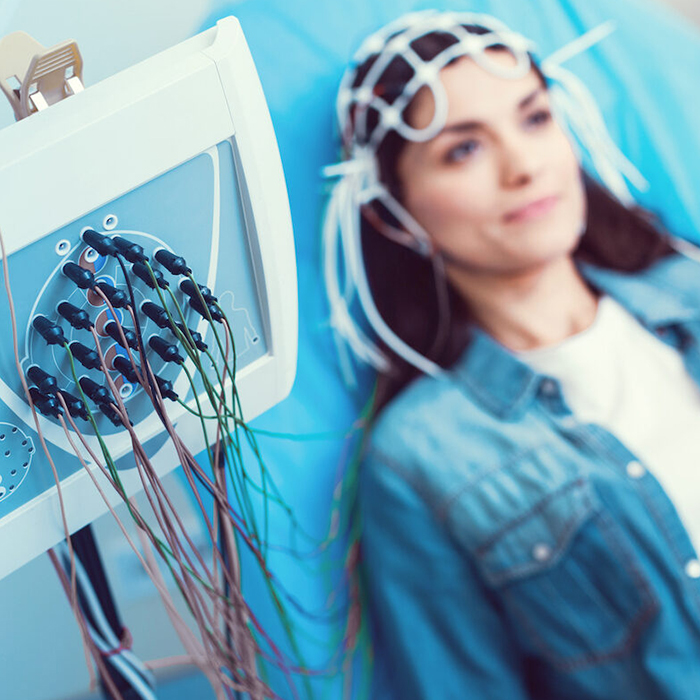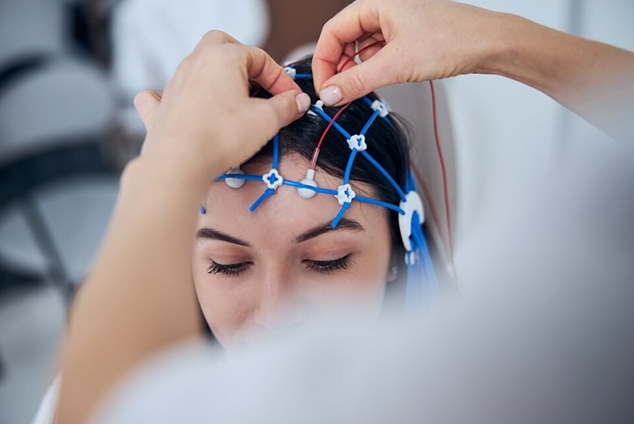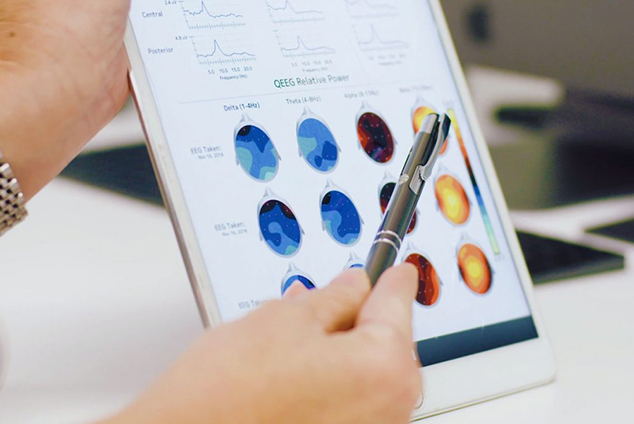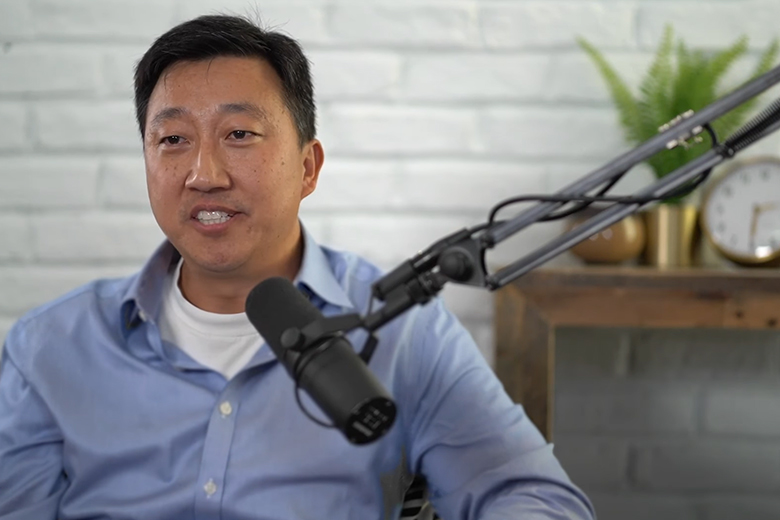Have You Experienced a Traumatic Brain Injury or Concussion?
This non-invasive treatment uses magnetic waves to gently stimulate affected areas of the brain to help restore function with some truly stunning results.

Injury to the brain, whether a concussion or a traumatic brain injury (TBI), can cause some serious symptoms. These symptoms can disrupt one’s quality of life or even be partially or extremely debilitating. Some of these adverse effects can also be long-lasting or considered permanent damage.
The CDC (Centers for Disease Control) defines a traumatic brain injury:
“A blow to the head or a penetrating head injury that disrupts the normal function of the brain. TBI can result when the head suddenly and violently hits an object or when an object pierces the skull and enters brain tissue. An injury can also occur without a direct blow to the head, such as in an auto accident where the forces cause the head to move violently in one direction and then snap back in another direction. This causes the brain to be jostled around inside the skull and can also injure the brain. Suffering a closed head injury can produce symptoms that range from mild to severe, based on the degree of damage that was done to the brain. While it’s possible for a person to experience a TBI to not have a loss of consciousness, in moderate to severe cases, LOC does usually happen. More severe cases of traumatic brain injuries often can result in coma or even death.“
A New Approach for Treatment of TBI and Concussion
MeRT (Magnetic E-Resonance Therapy) is a non-invasive, drug-free treatment used to help with recovery of Traumatic Brain Injuries and Post-concussive syndrome. This state-of-the-art technology uses a magnetic field to stimulate and balance brain function, guided by sophisticated diagnostics and imaging.
At our Brain Treatment Center in North Austin, this technology is used to help your brain recover from injury and relieve the symptoms associated with a TBI or concussion. If your brain injury is not healing and you are suffering from side effects, you may benefit from MeRT treatment.
A traumatic brain injury can result from different types of incidents. It can happen from a direct blow to the head, but can also occur without a direct blow when forces cause your head to move violently in one direction and then snap back in another, such as in an auto accident. Any time the brain moves inside the skull, it can cause injury.
If You Are Suffering From a TBI or Concussion, MeRT May be the Answer You Are Looking For!
The MeRT treatment process utilizes TMS (transcranial magnetic stimulation). However, it is a much more individualized approach than TMS.
TMS has been used for a long time to treat dysregulation within the brain. MeRT is a unique and more sophisticated process of TMS. By using a quantitative EEG/EKG to determine exactly what part of the brain is affected and to what degree, we can tailor treatment specifically to each individual’s needs.
Symptoms and Characteristics of a TBI or Concussion

- Confusion
- Headaches
- Loss of consciousness
- Fatigue
- Changes in vision
- Dilated pupils
- Loss of or lapses in memory
- Dizziness
- Cognitive difficulties
- Inappropriate emotional responses and thought processes
- Inability to think clearly or make decisions
- Facial weakness or weakness in other parts of the body
- Loss of bowel and/or bladder control
- Breathing problems
- Tinnitus (ringing in the ears)
- Loss of hearing
- Depression/anxiety
If you’ve suffered a mild concussion, you may make a full recovery simply by allowing some time to pass. Generally, with a mild concussion, loss of consciousness does not occur, though you may still experience a jostled feeling or not remember the actual injury itself. In some cases, you may suffer a concussion and not be aware of it at the time but later develop symptoms.
However, in moderate to severe injuries, time may not alleviate the symptoms, and further intervention is necessary. This is also true if you suffer a second or multiple injuries to the brain.
What is MeRT and How Can It Help Those With Autism?
MeRT, guided by sophisticated EEG imaging, uses a magnetic coil to gently stimulate and balance the function of the brain.
The patient first undergoes a qEEG (quantitative EEG) to identify dysregulation occurring in the brain. The results will show the brain’s brainwave pattern and function. This detailed analysis allows our doctors to determine the exact neural synchronization protocol to be used for each patient. The objective is to encourage improved communication within the brain, which can lead to significant clinical improvements. *
TMS (transcranial magnetic stimulation) is an FDA-cleared method of treating depression. TMS modulates the brain’s activity by using magnetic fields that pass through the scalp from an electromagnetic coil.
The MeRT treatment that we use to treat patients utilizes TMS. However, it is a greatly improved process since we individualize the treatment for each patient’s condition and needs based on the qEEG results. We customize the frequency, location, and power used for each individual.
MeRT is a more evolved version of TMS since its protocol combines technologies of transcranial magnetic stimulation, quantitative electroencephalogram (qEEG), and electrocardiogram (ECG/EKG). This combination allows for a treatment protocol based on each person’s unique brain pattern.
MeRT treatment protocols are usually 4-6 weeks long. Since it is a type of therapy, appointments are every day, Monday through Friday, and last approximately 30 minutes.
Usually, the patient will notice improvements in the way they feel during the first week. After going through treatment, you may want to resume a short duration of treatment at a later time. This can build on the benefits of the initial treatment.
For a more detailed explanation of the MeRT process, go to our What is MeRT page.
*Results may vary

An EEG is a brain scan that allows us to see what is happening in your brain.

The EEG report shows areas of the brain that are not functioning or connecting to other parts of the brain. We can then address these areas with tailored TMS.
Dr. Erik Won Discusses MeRT Treatment for Head Injuries

If you think you might be interested in exploring MeRT, you don’t have to decide anything right away

We understand that considering a treatment that you don’t know that much about can be daunting. You may feel quite uncertain about whether this is right for you. So the first easy step is to start with a simple phone consultation with our New Patient Coordinator. Here, you can discuss your symptoms and history, ask all the questions you want, and have her explain the protocols, fees, and details of treatment.
If, after this, you are interested in taking the next step in seeing if MeRT treatment is right for you or your loved one, we will initially schedule two appointments. Both appointments are about 45 minutes long.
At the first appointment, our neuro-technician will perform an EEG and an EKG. Both are simple, painless, and non-invasive tests to see exactly what is happening in your brain. At the second appointment, a few days later, when your test results are in and analyzed, you will have a one-on-one consultation with the doctor. Here, you will discuss your test results, ask any additional questions that you may have, and together determine if you (or your child, if this is about your child) are a candidate for treatment.
If you are uncertain whether MeRT is the right treatment for you, the testing and consultation will allow both you and the doctor to decide if you may benefit.
Assessment Period
If you and the doctor decide to move forward with MeRT, the next step is what we call the Assessment Period. Here, we will perform an initial period of treatment, followed by a new EEG to see if you are responding. The assessment period includes daily treatment Monday through Friday for the first week and Monday through Thursday for the second week.
During this assessment, we are looking for any clinical changes and that you are having a positive response to the treatment. You (or your child) will likely notice improvements starting to take place. Once we confirm this, you will continue treatment protocols.